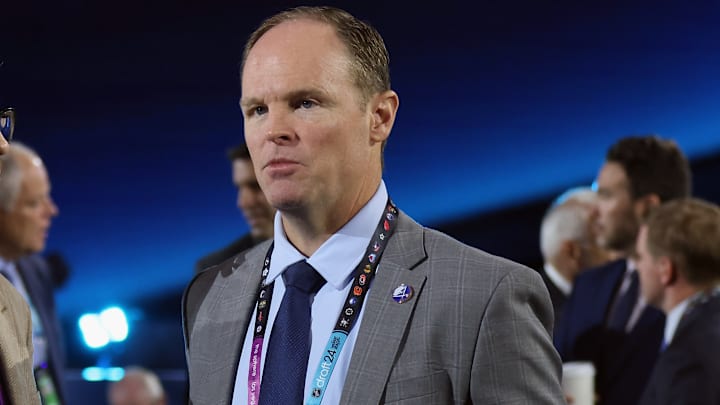Buffalo Sabres general manager Kevyn Adams correctly implemented a draft-and-develop strategy when he took over the team's front office in 2020. It's the only way for the franchise to compete since it's not a serious player in the trade or free-agent markets.
Here's the problem: Adams and his scouts have struggled to identify NHL Draft prospects who eventually become impact players, and new research shows exactly how important building through the draft is around the league.
Shayna Goldman of The Athletic looked at the outlook's ranking of the NHL's 150 best players and found 91 of them (61%) were acquired by their current team through the draft.
Rasmus Dahlin, the No. 1 overall pick in the 2018 draft, is the only Sabres player who made the list of homegrown players in The Athletic's top 150. He arrived before Adams' tenure began.
It's not just those high-end talents Buffalo is frequently missing out on, though.
Kevyn Adams' inability to hit on prospects in the draft's middle-to-late rounds is hurting the Buffalo Sabres' depth
The Sabres have drafted 52 players across six drafts since Adams took over the GM chair. Only nine of them have played at least a single NHL game (17.3%).
Even if you eliminate the last two drafts — hockey prospects tend to have longer development timelines than NFL or NBA players — it's nine out of 35 (25.7%).
If you break the numbers down further, just one of Adams' 41 picks outside the draft's top 35 have reached the NHL (2.4%). Not counting the past two years, it's one of 26 (3.8%). The one is Tyson Kozak, who was off to a strong start this season before getting hurt.
Goldman's research showed that, of the 91 homegrown players in The Athletic's ranking, 30 of them (33%) were drafted in Round 2 or later. So it's absolutely possible to find star players with those non-first round picks.
Although it's too soon to write off any player drafted within the past handful of years, early trajectories suggest not many of them are trending toward becoming full-time Sabres in the relatively imminent future, either.
Furthermore, even many of Buffalo's first-round selections haven't lived up to that high billing.
Owen Power (No. 1 overall in 2021) has yet to become a franchise-altering defenseman, while draft classmate Isak Rosen (No. 14 in 2021) seemingly doesn't have a path forward in the organization after being sent back to the AHL despite his success with the Rochester Americans in recent years.
Others like Noah Ostlund (No. 16 in 2022) and Jiri Kulich (No. 28 in 2022) have shown promise as possible middle-six contributors, but they don't appear on a journey toward elite status. Matthew Savoie (No. 9 in 2022) was traded to the Edmonton Oilers for Ryan McLeod last summer.
Zach Benson (No. 13 in 2023) looks like a hit, but his offensive numbers still need to increase, and there's still a promising outlook for Konsta Helenius (No. 14 in 2024) and Radim Mrtka (No. 9 in 2025), though the next 12 months are huge for their respective developments.
Put it all together and, even at baseline, the Sabres simply haven't done enough to maximize their draft capital under Adams. The problem is merely magnified because Buffalo's front office has struggled to land cornerstone roster pieces via trades and free agency.
It's an area Adams and his scouting staff, led by assistant general manager Jerry Forton, must improve in the years ahead to create better organizational depth.
Of course, if the Sabres fall short of the playoffs for a 15th consecutive year, team owner Terry Pegula may decide it's time to clean house to start fresh with a completely new front office in 2026.
